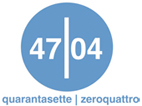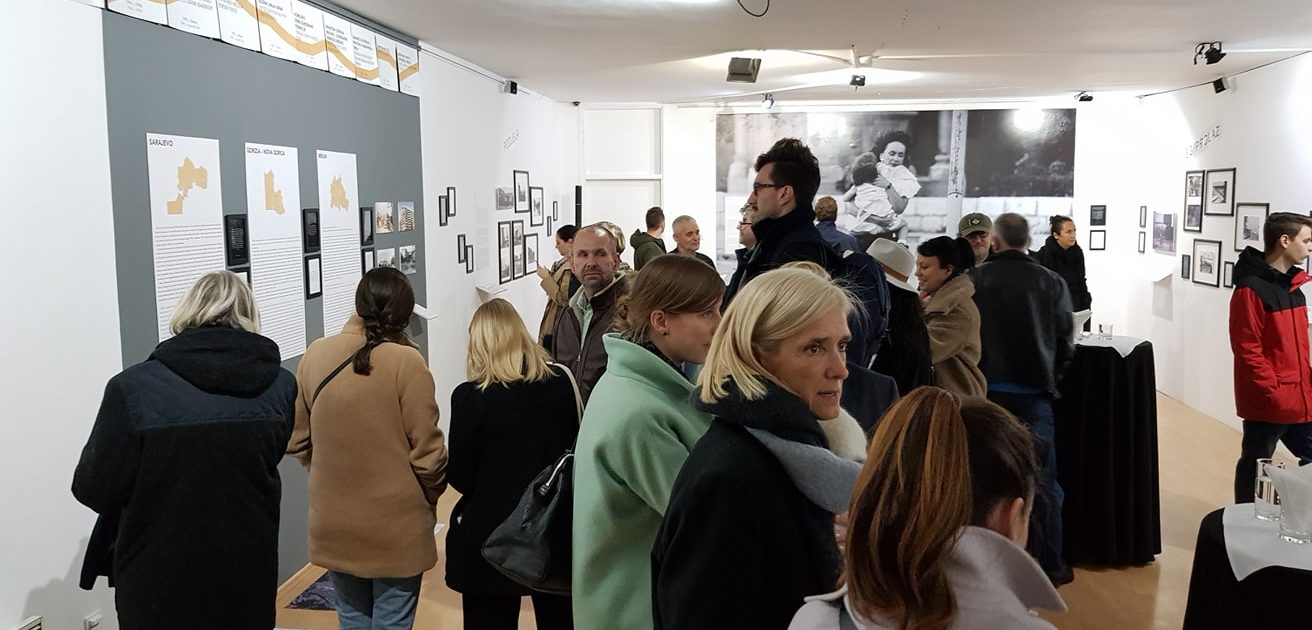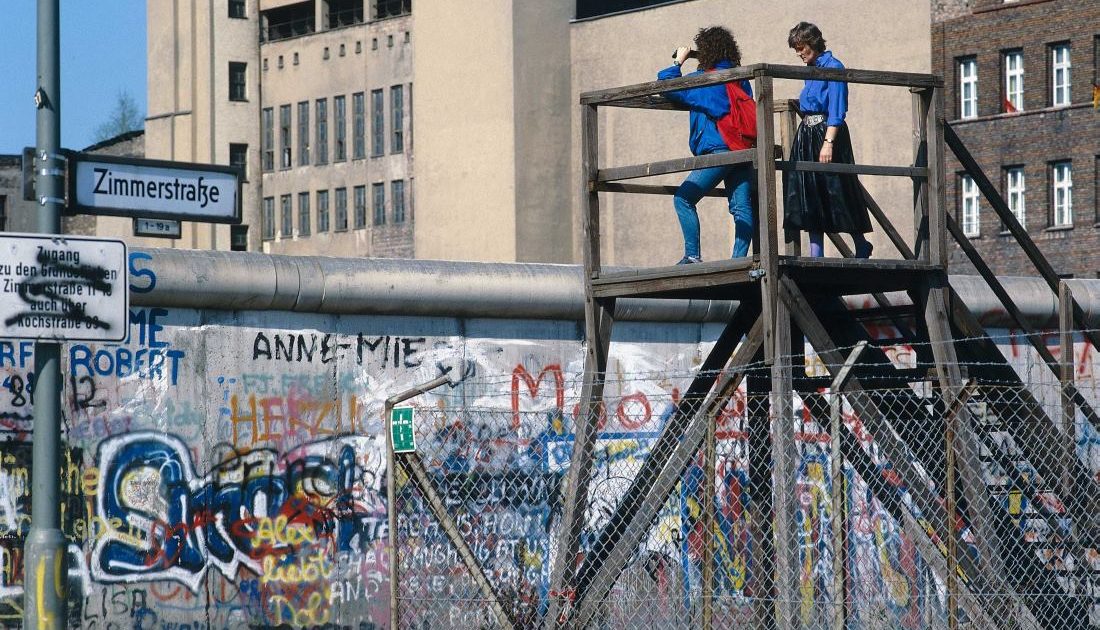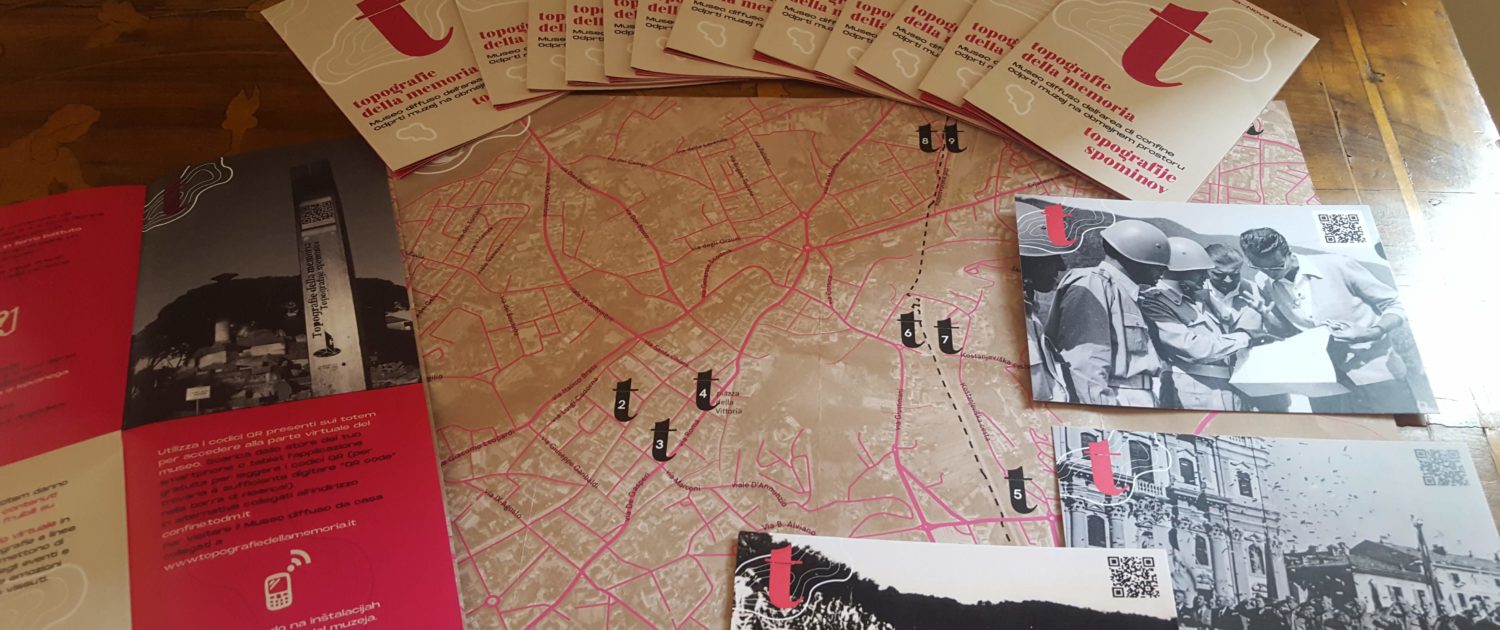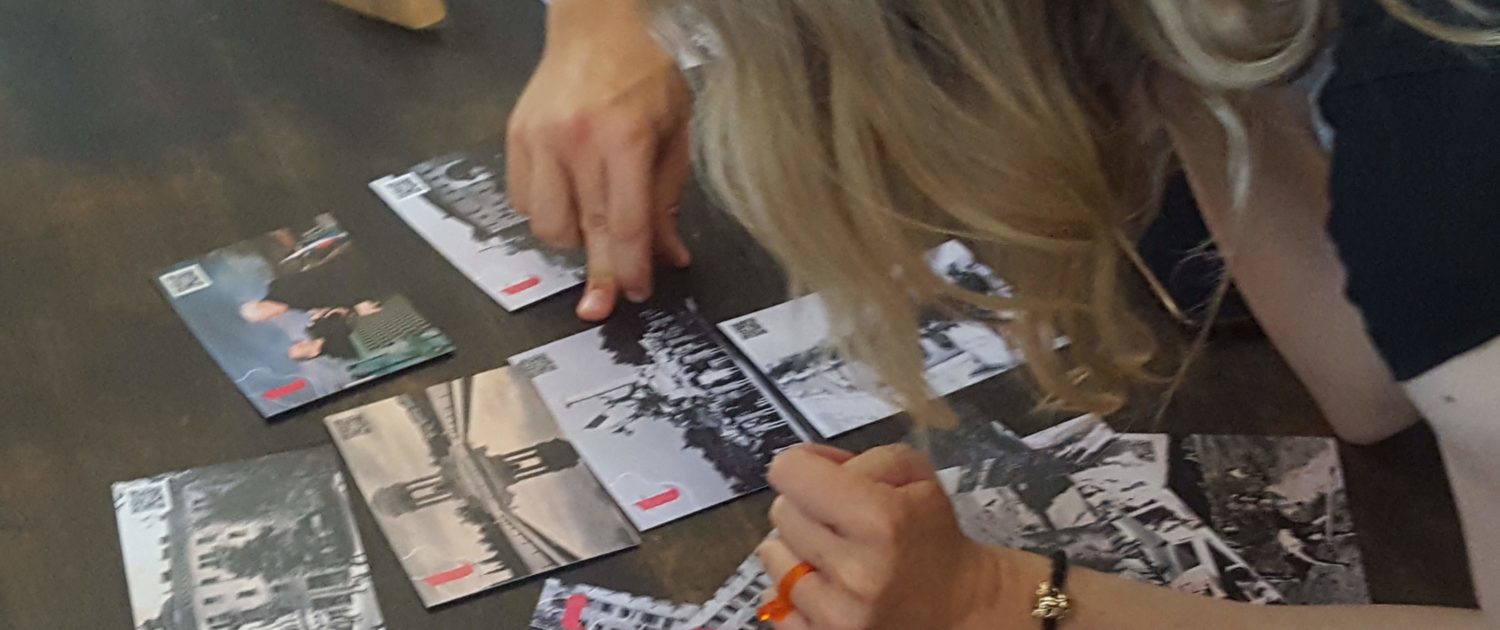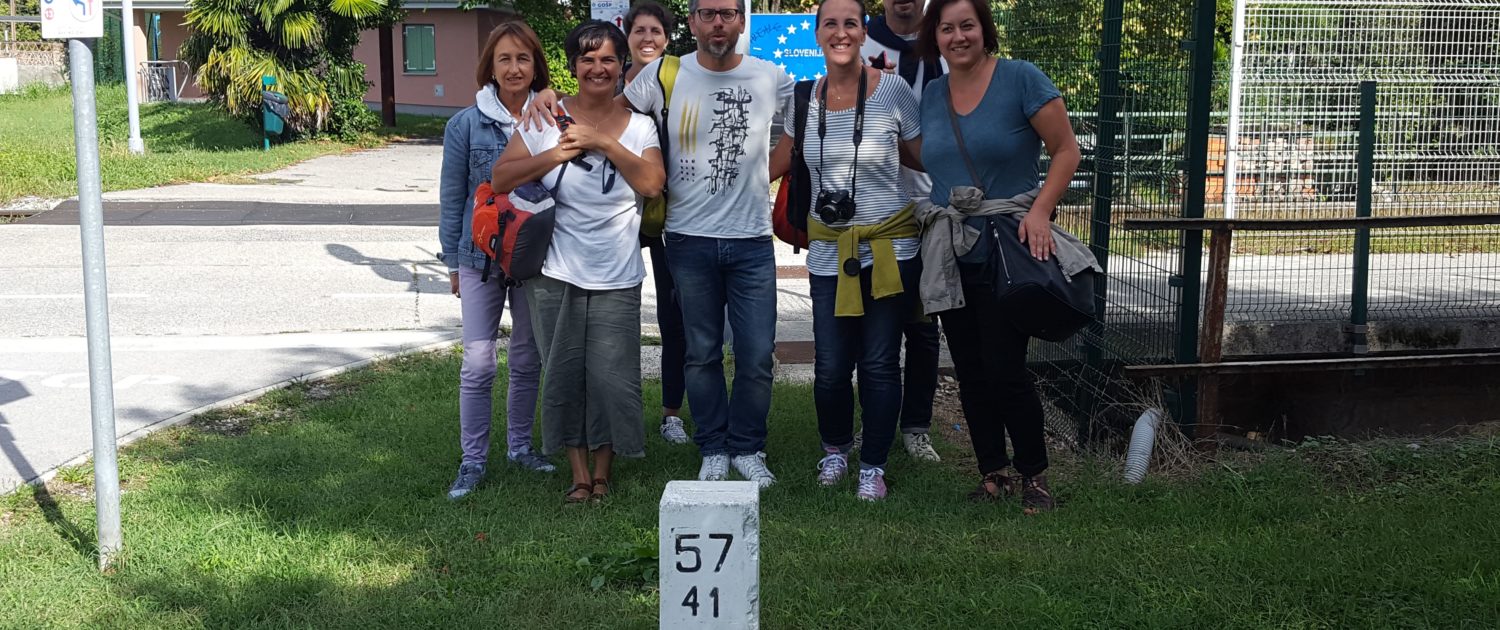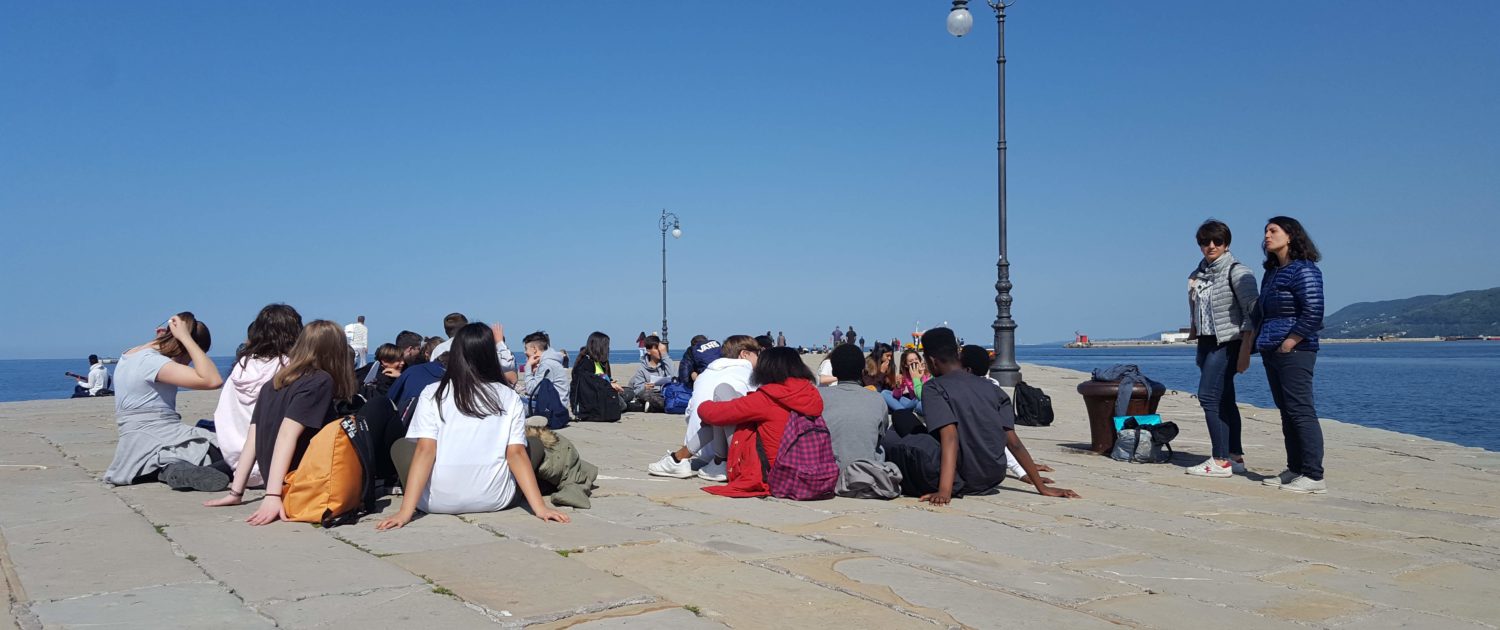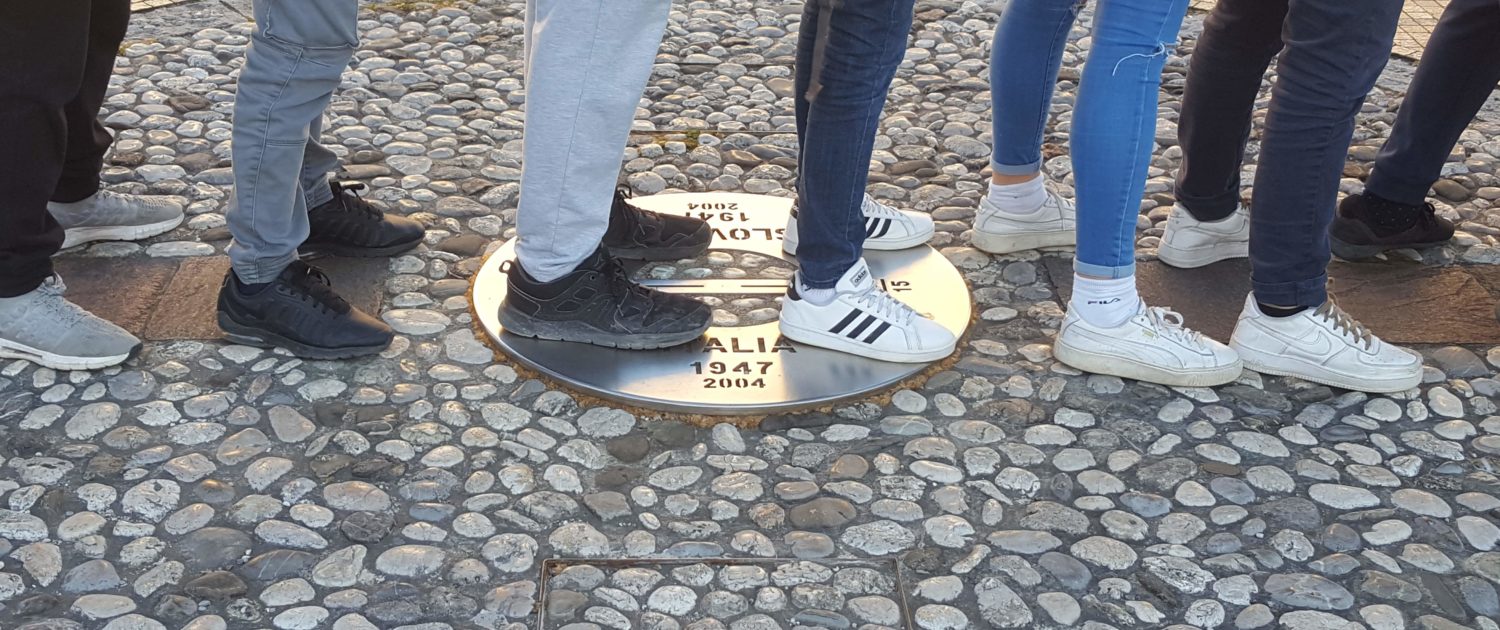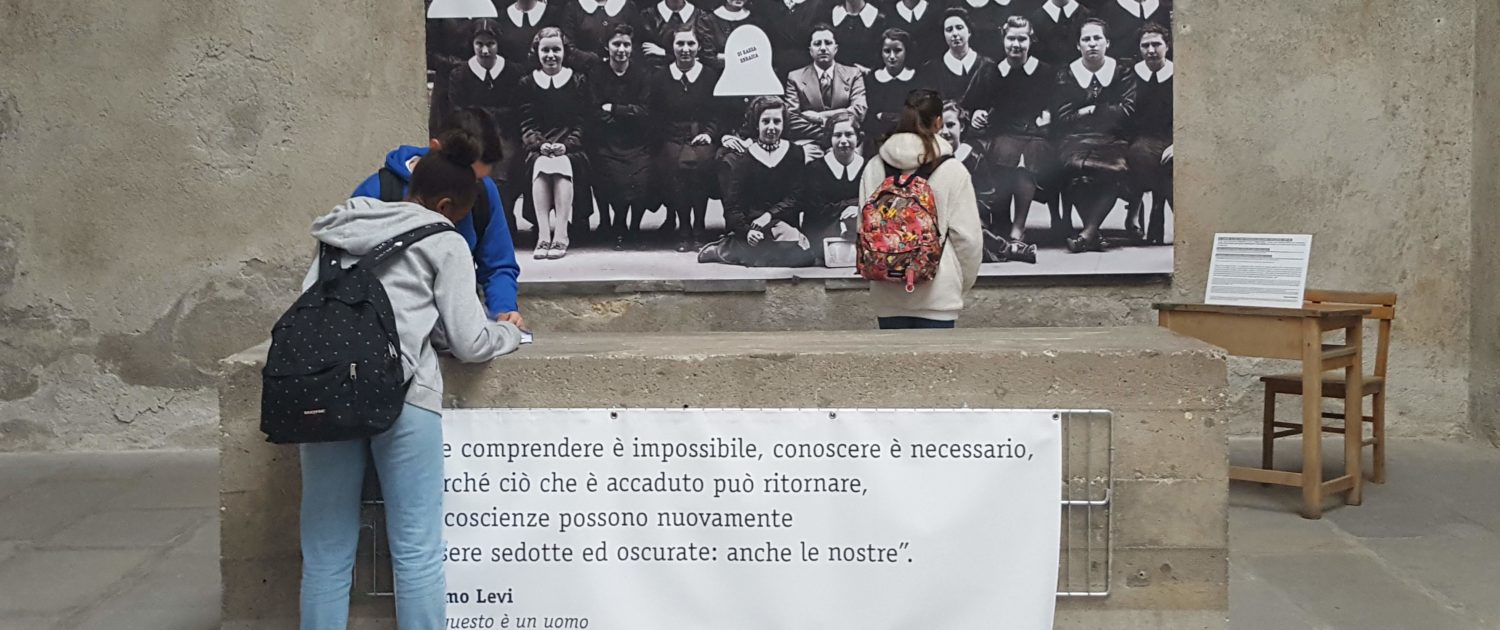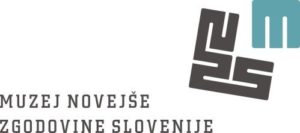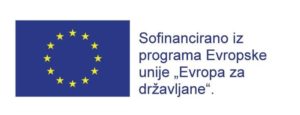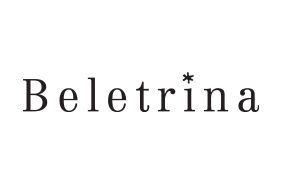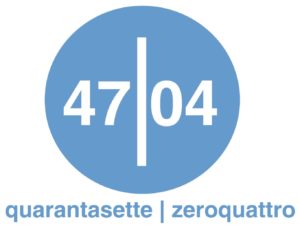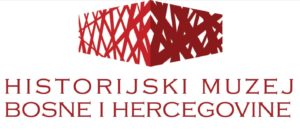OBSERVING WALLS
FINAL REPORT
Observing Walls: 1989-2019, supported by the Europe for Citizens programme, focused on the walls in Europe – understood as a physical reality and as a symbol of division in divided cities: Berlin, Gorizia/Nova Gorica, and Sarajevo. It was triggered by the realization that thirty years after the fall of the Berlin wall the process of democratisation of Europe failed to fully accomplish its goals. Many walls were brought down, but new ones were raised instead, some of them deeply troubling our society. The project helped understand these facts and build a sense of community among the citizens. Five partners – The National Museum of Contemporary History of Slovenia, Beletrina Academic Press, The Foundation Berlin Wall, The History Museum of Bosnia and Hercegovina, and The Quarantasettezeroquatro – from four countries, Slovenia, Germany, Bosna and Hercegovina, and Italy, joined forces to highlight Europe’s important and complex legacy.
1 “Kick-off” meeting
Project partners met in Ljubljana for the kick-off meeting to discuss the final methodology for the project implementation, appoint the working team, finalize the programme, and define the valorisation strategy. The activity involved partners from all participating countries, including 3 participants from Ljubljana (Slovenia), 2 participants from Berlin (Germany), 2 participants from Gorizia (Italy) and 1 participant from Sarajevo (Bosnia and Hercegovina). The meeting took place in Ljubljana and Nova Gorica, Slovenia between 4 and 6 March 2019.
2 Round tables and Panel Discussions
Internationally acclaimed lecturers and historians were invited to join the panel discussion in three partner countries Axel Klausmeier (Berlin Wall Memorial, Germany), Nicolas Moll (Franco-German Youth Office Berlin/ MemoryLab, France), Ingo Schulze (German writer, Germany), Paul Lowe (London College of Communication, London), Lejla Gačanica, (Sarajevo, Bosnia and Hercegovina), Klemen Miklavič (Mayor, Nova Gorica, Slovenia), Leo Schmidt (Brandenburg University of Technology, Germany), and Kaja Širok (National Museum of Contemporary History, Slovenia) presented an in-depth historical reflection on the circumstances of building and removing walls in Berlin, Gorizia/Nova Gorica and Sarajevo. Borders, physical and mental, were debated with relation to nowadays events, comparing different national contexts and unearthing common European values.
Their interventions were followed by a panel discussion that attracted in particular students. The activity involved more than 258 citizens, including 119 participants from Ljubljana, Slovenia, 74 participants from Sarajevo, Bosnia and Hercegovina, and 65 participants from Berlin, Germany. Reports on the activity alongside interviews with the participating panellists appeared in several media. The Panel Discussions took place on 5 March 2019 in Ljubljana, Slovenia, on 6 March in Nova Gorica, Slovenia, on 12 April 2019 in Sarajevo, Bosna and Hercegovina, and on 15 May 2019, Berlin, Germany.
3 Archives of Memory
The activity involved citizens from all partner countries, providing 146 testimonies including 64 testimonies from Slovenia, 53 from Bosnia and Hercegovina, 9 from Italy and 20 from Germany.
Testimonies include photos, letters, postcards, interviews, stories, artifacts, memories but also personal views of the citizens from the four discussed cities. Some of them are still available online, all of them, however, are treasured by the partners and were used to create the international travelling exhibition and the book. In Slovenia, an Archives of Memory was created on the RTV SLO MMC news portal https://www.rtvslo.si/zidovi/ with testimonies from Slovenia, but also from the partner countries are also presented. Alongside the stories, many articles and video records are also available.
4 Online Contest Observing Walls
Students from all European countries as well as from Brazil, Israel, Mexico, Palestine, the USA, and elsewhere participated in the in Instagram contest Observing Walls: 1989-2019. Using the hashtag #ObservingWalls young people from around the world contributed their views on the walls and borders in today’s society. From 1 February to 30 May 2019 more than 300 entries were collected, the best of which were awarded, exhibited and presented in the Book of essays.
5 Travelling exhibition Observing Walls
The international travelling exhibition, a joint effort of all four partners, was first put up at the National Museum of Contemporary History in Slovenia (14 June 2019-18 August 2019), travelling first to Berlin, Germany (20 September 2019-1 March 2020) where it was put up in the Marienfelde Refugee Center Museum, then proceeding to Bosnia and Hercegovina where it was on display at the History Museum of Bosnia and Hercegovina in Sarajevo (22 November 2019-29 February 2020) and finally reaching back to Slovenia where it was displayed in Nova Gorica during the Nova Gorica Book Fair (17-20 December 2019). Now, the exhibition can be viewed as an online 360º version at http://www.muzej-nz.si/en/projects/1410.
The first three exhibition openings were attended by more than 300 visitors, including 122 participants in Ljubljana, Slovenia, 75 participants in Berlin, Germany, and 71 participants in Sarajevo, Bosna and Hercegovina. More than 3.000 visitors saw the exhibition between June 2019 and April 2020.
6 Workshops Observing Walls
The workshops were performed in parallel to the exhibition, enabling thus a higher participatory effect among young people. At the workshops, participants studied the historical documents as well as the Archives of Memory. They visited places of memory and discussed the topics of freedom, democracy, remembrance, the policy of division and different interpretations of shared European values. In the three partner countries, workshops were attended by 235 young people, including 69 participants in Gorizia, Italy, 95 participants in Berlin, Germany, and 71 participants in Sarajevo, Bosna and Hercegovina. Workshops were also used for the valorisation of the project’s results. .
7 Book of Essays Observing Walls
The book of essays Observing Walls: 1989-2019 features essays by guest lecturers as well as students from partner countries, Instagram contest images as well as testimonies from the Archives of Memory. It also includes an article by a renowned Slovenian investigative journalist, presenting the current refugee crises in correlation to the project’s subject. It is available in English in print as well as in e-book format at https://www.biblos.si/isbn/9789612845988. More than 21 participants, including authors of essays, photographs, translators, editors, language editors, proofreaders and designers contributed to the making of the book: 12 from Slovenia, 4 from Germany, and 2 from Bosna and Hercegovina.
8 Valorisation
The valorisation involved more than 200 young people who participated in the workshops between 26 March and 23 October 2019. The valorisation aimed to evaluate the implementation of the project and the results of the project, assessing the gained knowledge about the legacy of the four towns through the issue of division, the collective reinterpretation of the past and shared European values. The valorisation showed that young people participating in the workshop at first understood the issue of the wall narrowly, focusing on their personal experience as citizens of a particular country. The testimonies recorded at the end of the workshop prove that the project increased their knowledge of the wall as a physical and mental barrier as well as a political issue. They could see that walls still exist in today’s Europe and that Europe’s legacy of democracy and equal rights still inspire citizens to fight them in their milieu.
